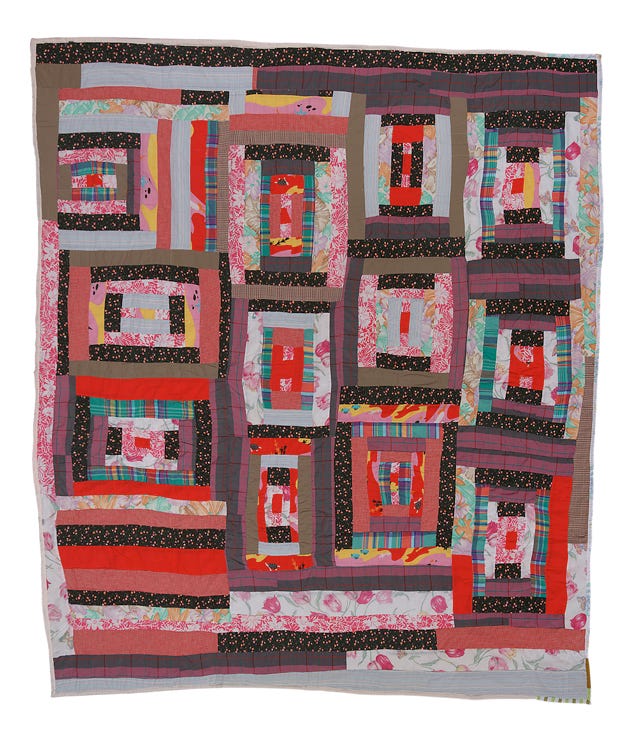“Quilts are seen as a material that is domestic and associated with a certain leisure and comfort. These are maps. These are archival documents. It’s important for us to not look at them as materials that should be fetishized and consumed through the lens of a static leisure. Rather, they need to be vivified and animated, always.” — Legacy Russell, Curator of the “New Bend”
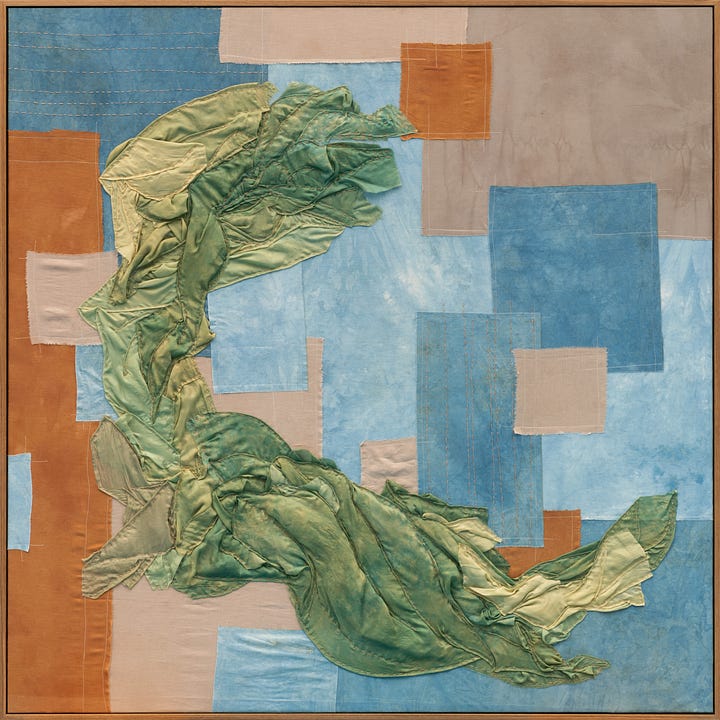
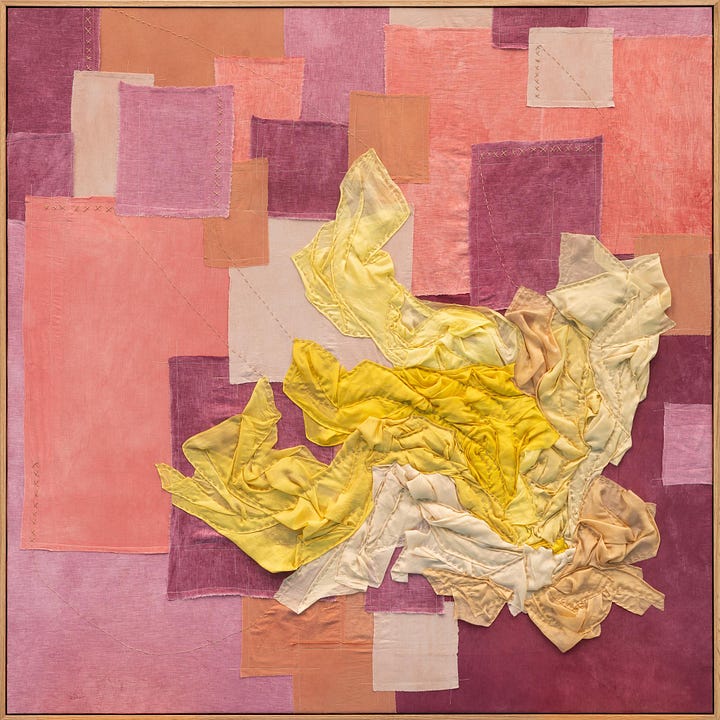
Quilting is an art form that spans cultures and civilizations, but is often dismissed as a hobby or folk art. Contemporary textile artists demonstrate the power of taking previously worn or natural materials and making them into a cultural artifacts. From abstract patterns capturing black life in Gee’s Bend to Japanese boro, each style is a testament to the skill and artistry of those who practice it.
Quilts in Black America | Gee’s Bend and Basil Kincaid
In 2002, the Whitney Museum featured “The Quilts of Gee’s Bend”, highlighting 60 quilts made in Gee’s Bend, Alabama from the 1930s on. Gee’s Bend is a remote, historically black community where for generations women passed down the art of quilting geometric patterns out of old clothes, cornmeal sacks, and whatever they could find. The exhibit opened with great fanfare, comparing the quilts to a Matisee or Klee and catapulted quilting from a craft to fine art.
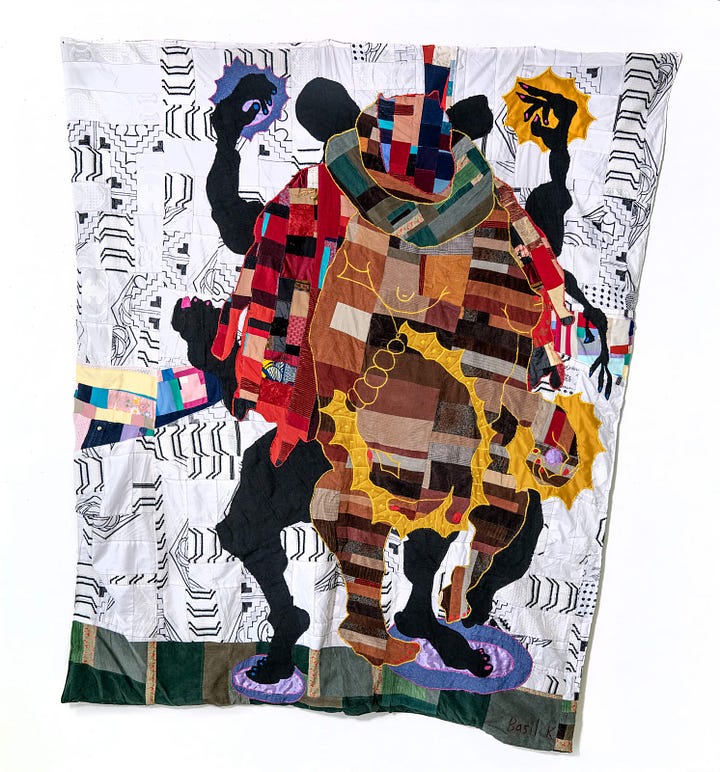
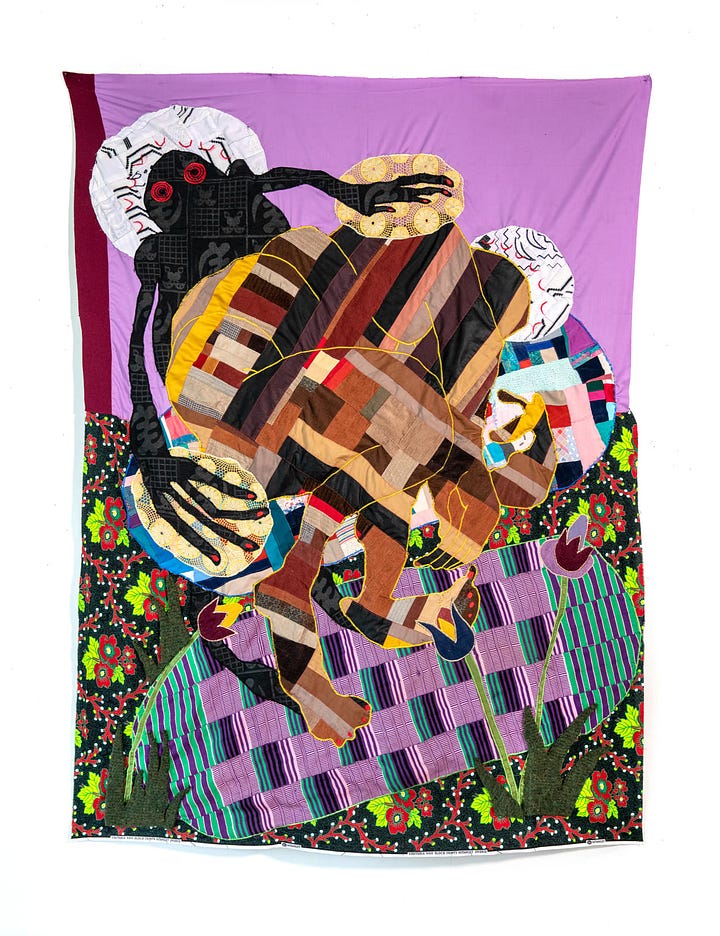
“The New Bend” at Hauser & Wirth (currently on view at the Somerset gallery in London) features 12 contemporary quilting artists including, Basil Kincaid. Kincaid studied drawing and painting at Colorado College and went on to be a middle school art teacher. Years later, they felt the urge to deepen their art practice and went to an art residency in Accra, Ghana. There, Kincaid started quilting for the first time, recalling their grandmother’s intuitive patterns and found their way back to their family history through art. Kincaid’s quilts are primarily comprised of found, salvaged, and donated materials that held significance to people who once enjoyed them. The bold graphical images and bright hues are a strong nod to Kincaid’s past woven with their own story. As Kincaid shared in an interview with Flaunt, “…I’ve been able to find the quilt as a vehicle to talk about my family and the importance of Black family life and rural Black life, things that often go overlooked”.
Japanese Boro | Megumi Shauna Arai
Brooklyn based, Megumi Shauna Arai is inspired by the Japanese custom of boro, mending and patching textiles to create garments or quilts. A self-taught artist, Arai incorporates salvaged fabric from various countries and eras - some foraged, others expertly collected over time. She hand dyes the threads she embroiders with, imbuing every element of her compositions with layers of details and life. In one of Arai’s series, she uses roller-printed floral fabric that was produced in small textile factories in Russia in the early to mid century for the Asian market. She connected to the fabric as “…this idea of two cultures meeting. One assuming what the other one likes, but also putting its own aesthetic learnings and perceptions into it”.
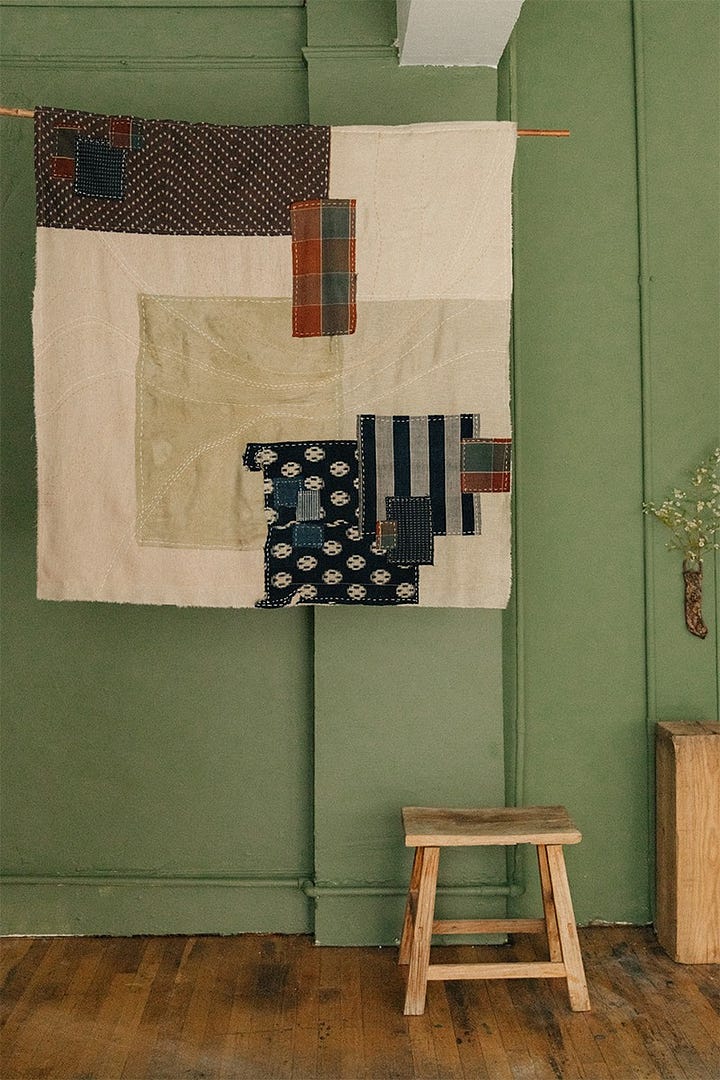
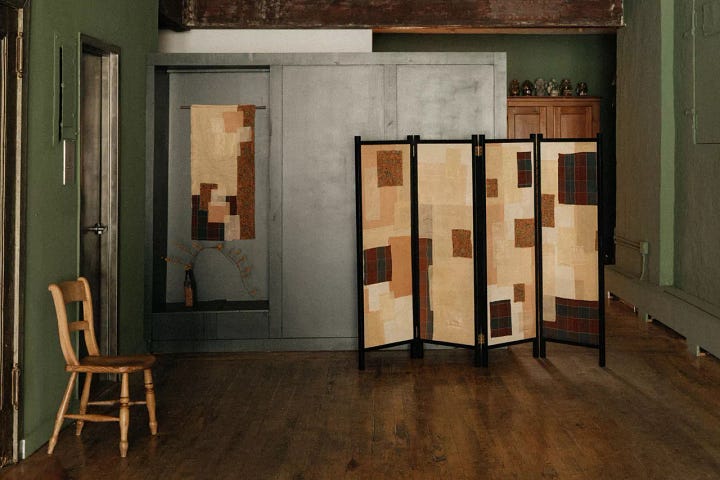
In her exhibit “Moments of Fulfillment” last fall at Tiwa Select, Arai featured shoji and noren, Japanese room and doorway dividers, sectioned off into the four season providing spaces for reflection. Each season’s textiles and threads were dyed with herbs, flowers, and nuts that captured the essence of the time - sage, walnut, and rosemary for “Winter” and chestnut, sumac, and persimmon for “Autumn”. As Alex Tieghi-Walker, owner and curator of Tiwa Select shared, “People talk about the slow food movement, this is almost like a slow craft and design movement”.



